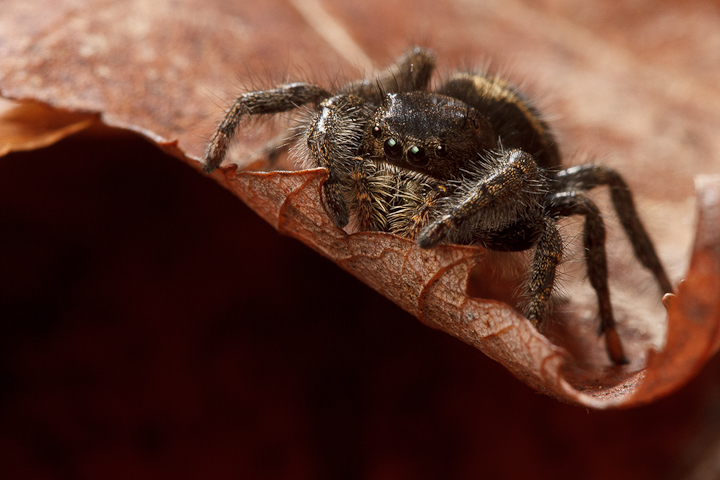 This weekend, I did not have much time to go out and shoot, so I got my photography in by taking some shots of a Phidippus
This weekend, I did not have much time to go out and shoot, so I got my photography in by taking some shots of a Phidippus johnsoni female we are keeping in the apartment. In some of these shots, I was trying to mix hard and soft light to show the hairs of teh spider more clearly, but with the activity of the spider, it became a bit of a free-for-all regarding lighting.
Update: I am not sure if this is Phidippus johnsoni. It may well be P. borealis.
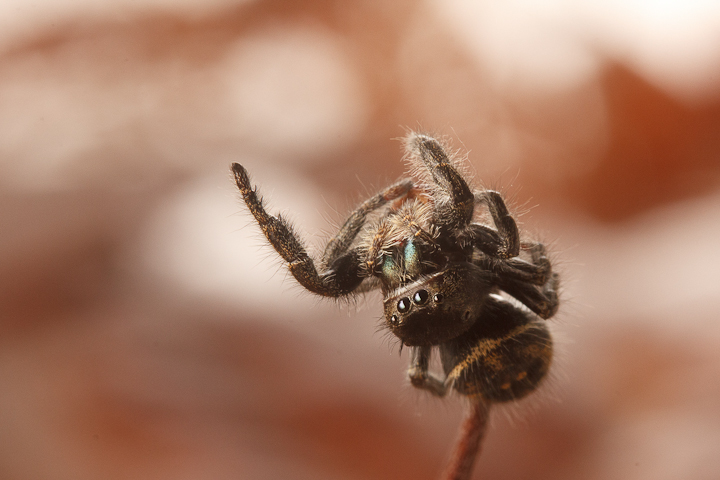
Here is the spider just before leaping. The extended forelegs are characteristic of an about-to-leap jumper.
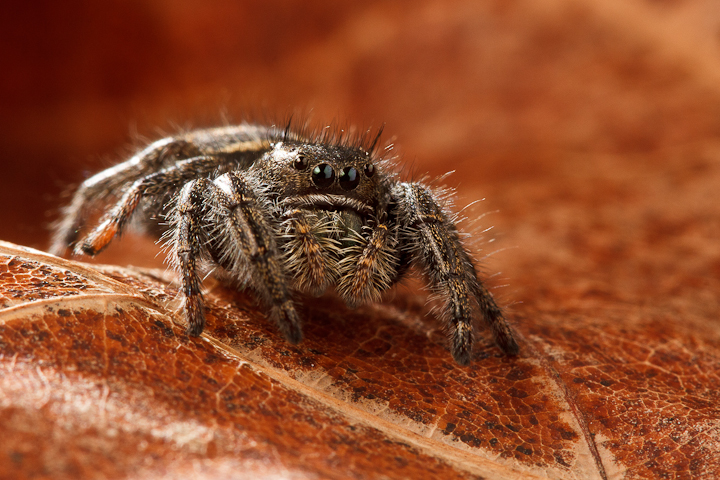
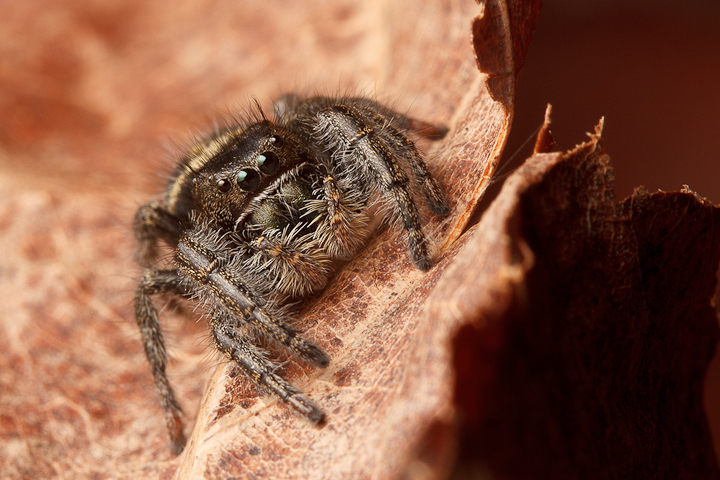
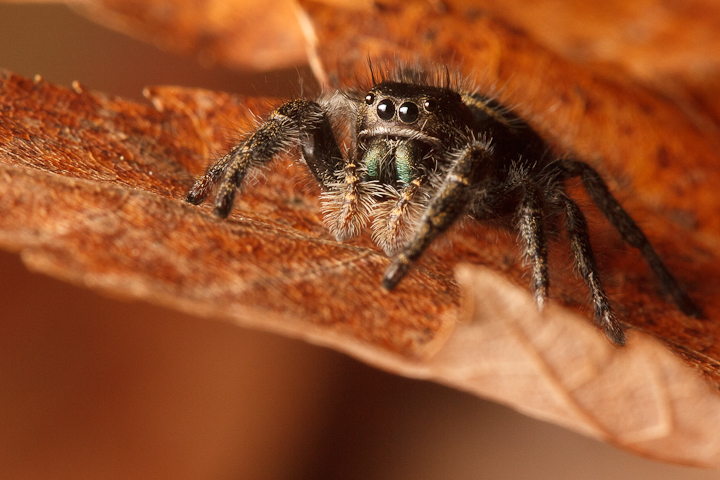
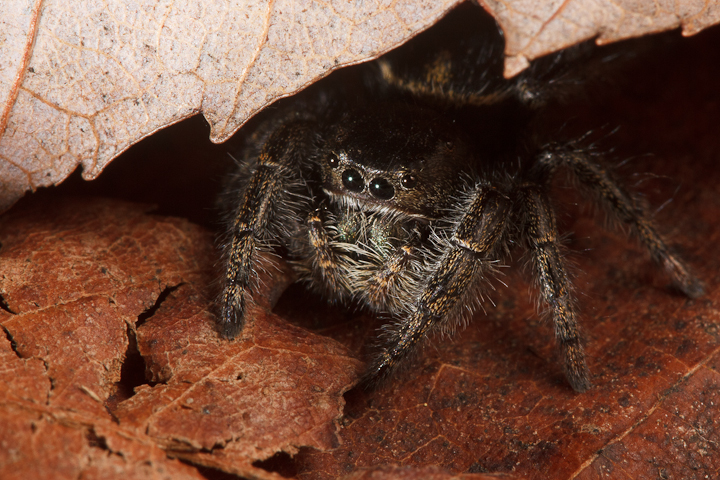


Wonderful photos and nicely showing just how cute jumpers are! But Sean, are you sure she’s a Johnson jumper since I can’t see red on her abdomen? Or maybe it didn’t show well in your photos. Maybe she’s a darker morph?
The funny thing I’ve noticed is that many very different species of fauna here are much darker than the normal I’ve seen in photos. I wondered if it isn’t adaptation to our darker gloomier are – that is, as compared to the same species when it occurs in a brighter sunnier area. Any opinion? Have you noticed this too?
I was surprised to read that a Johnson jumper can be 1 cm in length! I’m used to the much smaller zebra jumpers. Good for you and Catherine keeping the spider in your house! 🙂 I don’t bother telling my son as he’s freaked about spiders but I like letting the little zebra jumpers I find inside stay, along with the cellar spiders (Pholcus sp) since both are beneficial and quite nicely mind their own business.
You know, I am not really that sure about the ID of this. We did find males of P. johnsoni very close to females that look like this in the summer, so I think it is correct, but I do not know. The other options would be P. purpuratus, or P. borealis. This individual does have some reddish on her abdomen, but it is faint.
Hard to figure out exactly what some species of arthropods are, isn’t it? But it doesn’t really matter. What matters is the beautiful photos you shared with us. I went to BugGuide.com to look at the two other species you suggested. I went back and forth comparing images and was again struck by how good your photos are! Heck, I’d be happy to enlarge them, frame them simply (in order not to distract from photos themselves) and hang them as art. They really are quite lovely!
One question, and I hope I’m not being a bother. How do you manage to identify the spiders and insects you find?? All I could say was it was a jumping spider. The only way I’ve been able to ID species is by time consuming searching – mostly through BugGuide – or posting the photo there and asking. There are many species of brown/grey geometrid moths I haven’t a clue about. And they seem to be the vast majority where I live.
Are there any special skills or is it just training and experience? Thanks, Sean.
I suppose I have a certain knack for retaining ID’s of animals I have seen. I have some formal training in insect ID, which helps a lot, but mainly it is through muddling through ID’s using guides and keys. After that happens, and you have seen many members of a group, a gestalt ID of related species is possible.
Lovely photos Sean! I always enjoy looking into the eyes of a jumping spider!
Thanks! I do to, especially those of Evarcha.